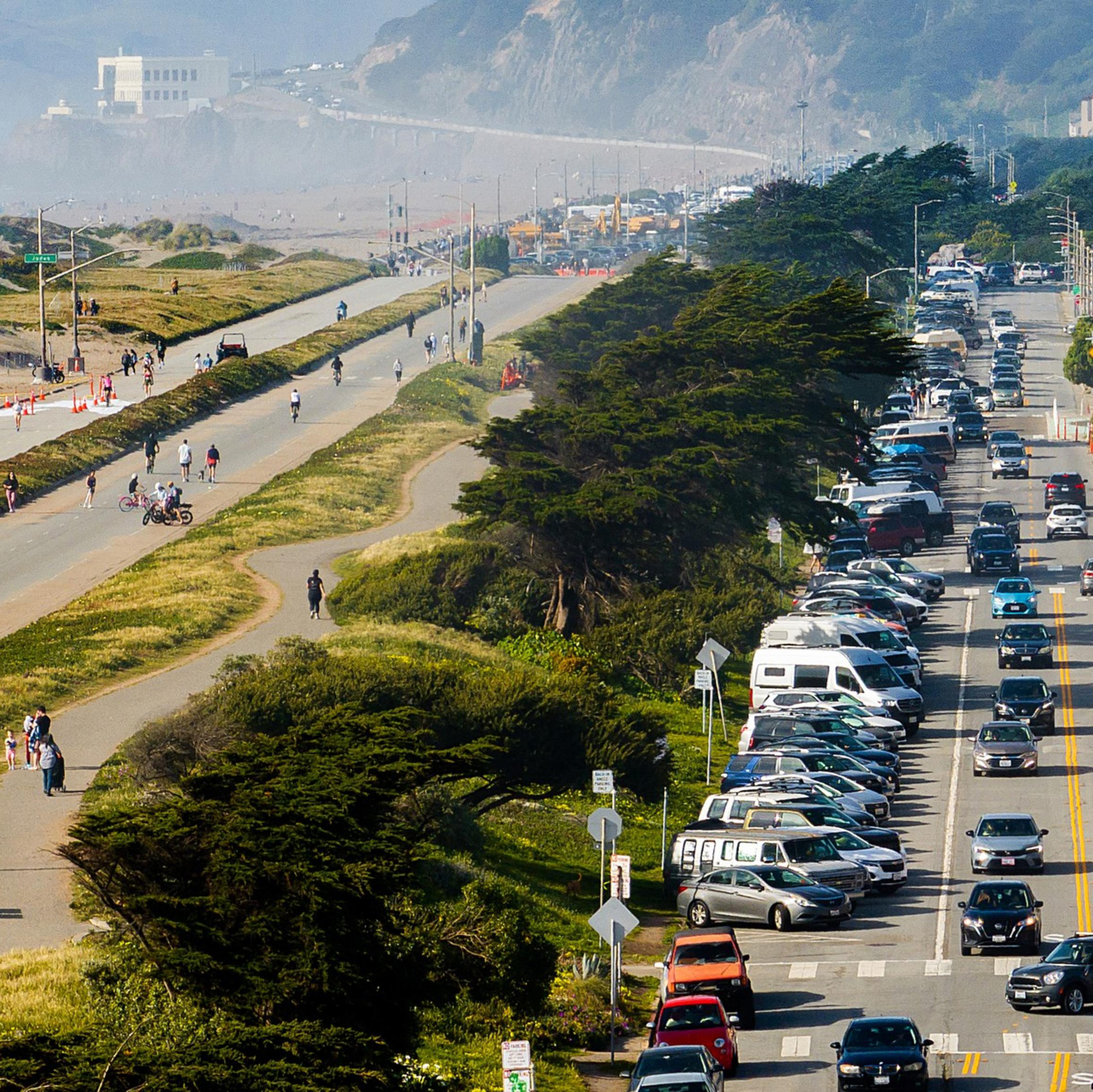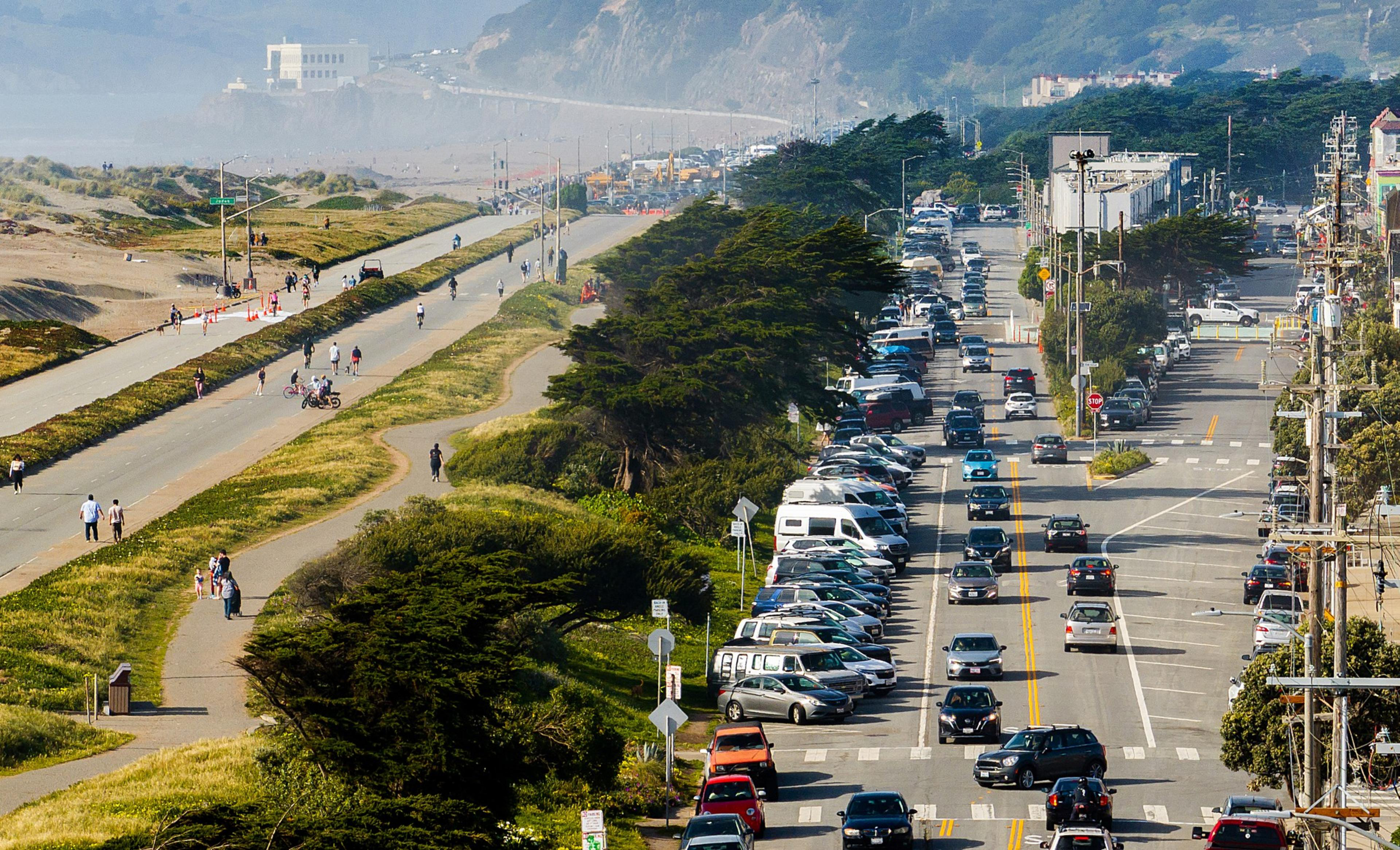For many on San Francisco’s west side, March 15 was the day a nightmare became reality.
After nearly 100 years as a beachfront artery for automobiles, the southern portion of the Sunset’s Great Highway was permanently closed to cars five months after voters approved Proposition K in a closely watched, highly divisive vote.
Now, three weeks into the post-car era of the Great Highway, we have the first evidence that some of the measure’s loudest opponents may have been right about the consequences: Data reviewed by The Standard confirm that traffic in the Sunset has gotten worse.
Streetlight, a firm that has conducted traffic studies for the city, found that the number of cars on the Lower Great Highway (which runs parallel to the closed road) has more than doubled during peak commute times since the measure took effect. Significant traffic spikes were also recorded on Sloat and Sunset boulevards, while 19th Avenue saw a 20% uptick in morning northbound traffic toward the center of the city and the Golden Gate Bridge.
Streetlight, which collected and examined traffic data at The Standard’s request, analyzed peak times on one Tuesday before the road closed and one Tuesday after. The company was previously contracted by the San Francisco Municipal Transportation Agency to do a 2021 Sunset traffic study.
The 2021 study found that an average of 17,200 vehicles drove on the Upper Great Highway every weekday before the pandemic.
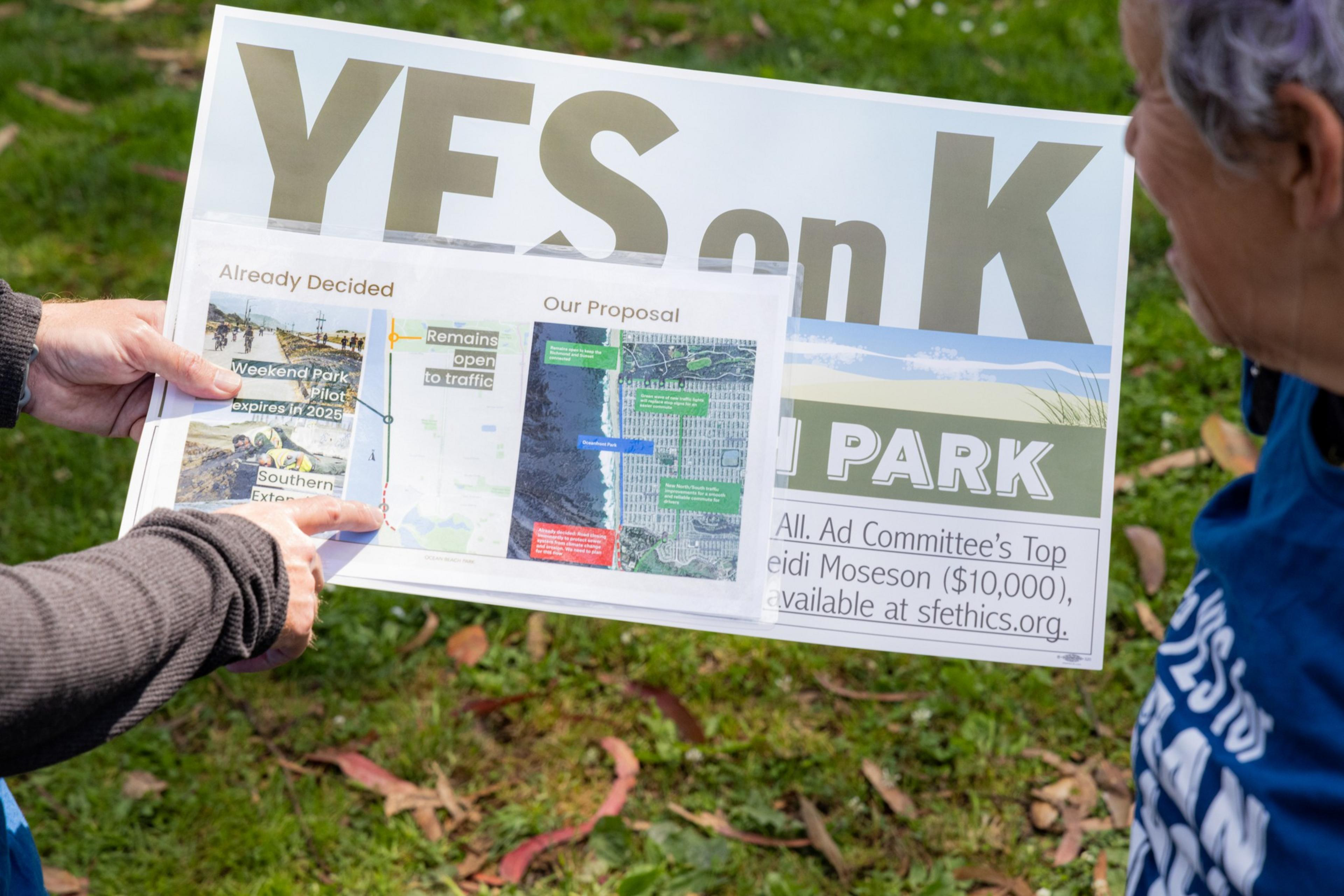


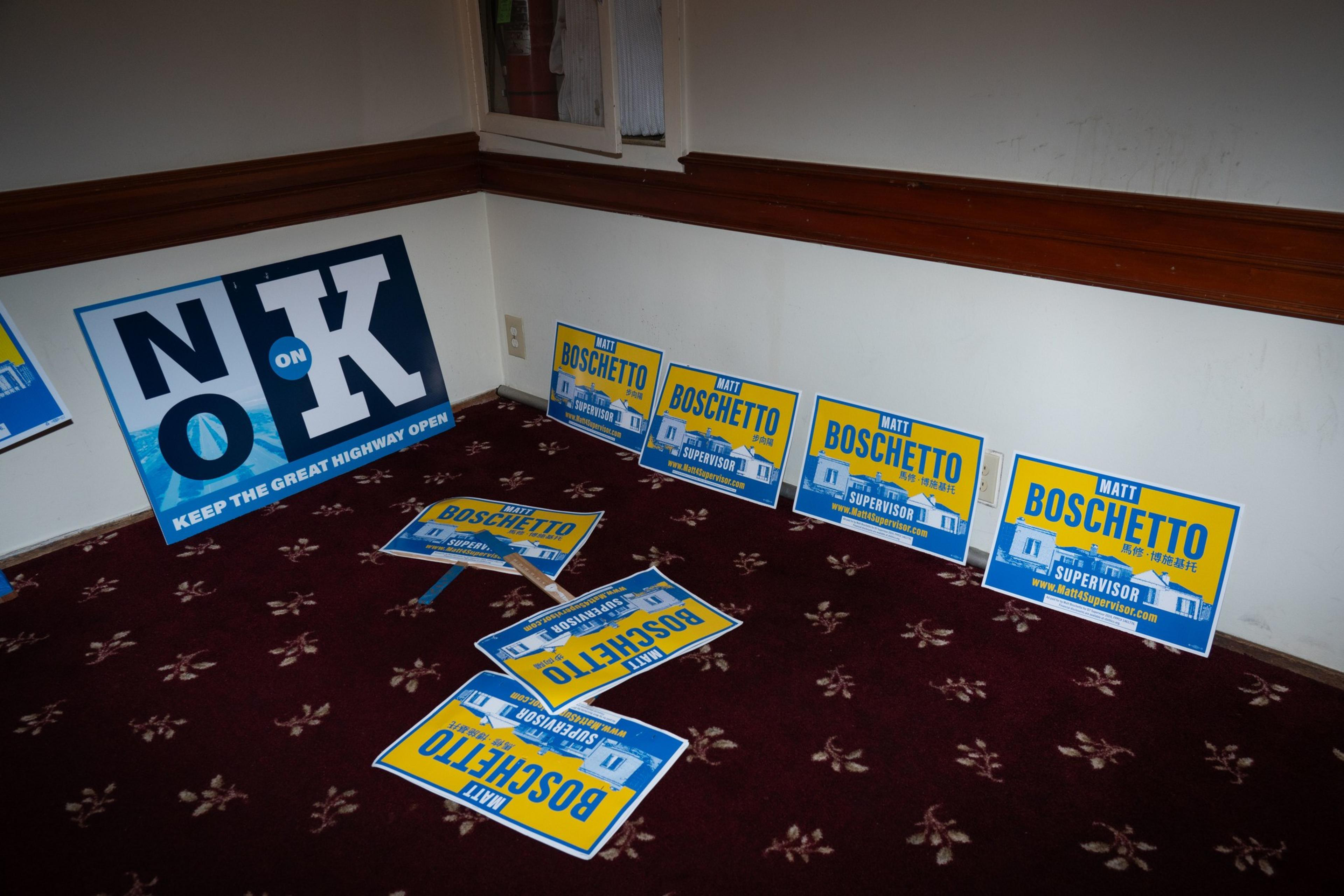
Area residents had predicted an increase in traffic. “There were thousands of cars that took the Great Highway every day,” said Pete Reichart, who lives on Lower Great Highway. “Those people are gonna take the path of least resistance — that’s through the neighborhood.”
While 55% of citywide voters supported Prop.K , those living near the road voted overwhelmingly against it. Opponents feared the highway’s closure would bring traffic to sleepy residential streets not equipped to handle it; supporters said thousands of lives would be improved by a permanent walkway.
Almost immediately after Prop. K passed, a recall campaign sprouted against Supervisor Joel Engardio, whose district includes the Sunset, over his support for the plan. Those against the closure are also trying to invalidate Prop. K, arguing in a March 12 lawsuit that voters did not have the right to close the street to cars.
“This was expected,” Engardio recall campaign leader Vin Budhai said of the traffic analysis. “There was going to be an increase in traffic because of people taking alternate routes.”
Even as the city transforms the strip into a park — set to open April 12 — resentment over the change has bubbled up in recent weeks. In March, vandals tagged a new mural along the road with graffiti and spray-painted onto the road such messages as “gentrify” and “you’re bringing trouble … open highway.”
After the road’s weekday closure beginning March 15, disgruntled residents complained about traffic jams in the neighborhood, posting photos and video on social media of what they said was out-of-control congestion in the neighborhood and elongated commute times.
Streetlight found that traffic more than doubled in both directions of Lower Great Highway between Sloat Boulevard and Lincoln Way at 8:30 a.m. Eastbound traffic on Sloat Boulevard jumped 50%.
At 4:30 p.m. on the same dates, traffic more than doubled in both directions of the same stretch of Lower Great Highway, while eastbound traffic on Sloat Boulevard was 80% higher than the previous week, according to the analysis. Northbound traffic on Sunset Boulevard saw a 30% uptick, while southbound traffic was up 15%.

In addition to soliciting Streetlight’s data, The Standard spent four days touring 10 streets in the Sunset, asking residents for their traffic observations. Thirty-eight people were interviewed. Their opinions varied.
Jackie Lewis, 71, who lives on 47th Avenue near Taraval, said traffic hasn’t changed much, but her neighbor down the block had a different take.
“Three times the amount, and they’re driving fast,” said Courtney Roche, 39.
Meanwhile, people interviewed by The Standard who live on Sloat Boulevard and Noriega Street said traffic on their streets has gotten worse. Those on Sunset and the Lower Great Highway said they haven’t noticed more cars.
Vincent Mandecote, 35, who works at Costco in South San Francisco and lives on 46th Avenue near Ulloa Street, estimates that traffic on his street has increased “60% to 70%” since the Great Highway closed to weekday car traffic. But Kelly Zhu, 32, a hospice worker who lives just up the block on 46th Avenue, between Ulloa and Taraval streets, said traffic has gotten only “a little busier.”
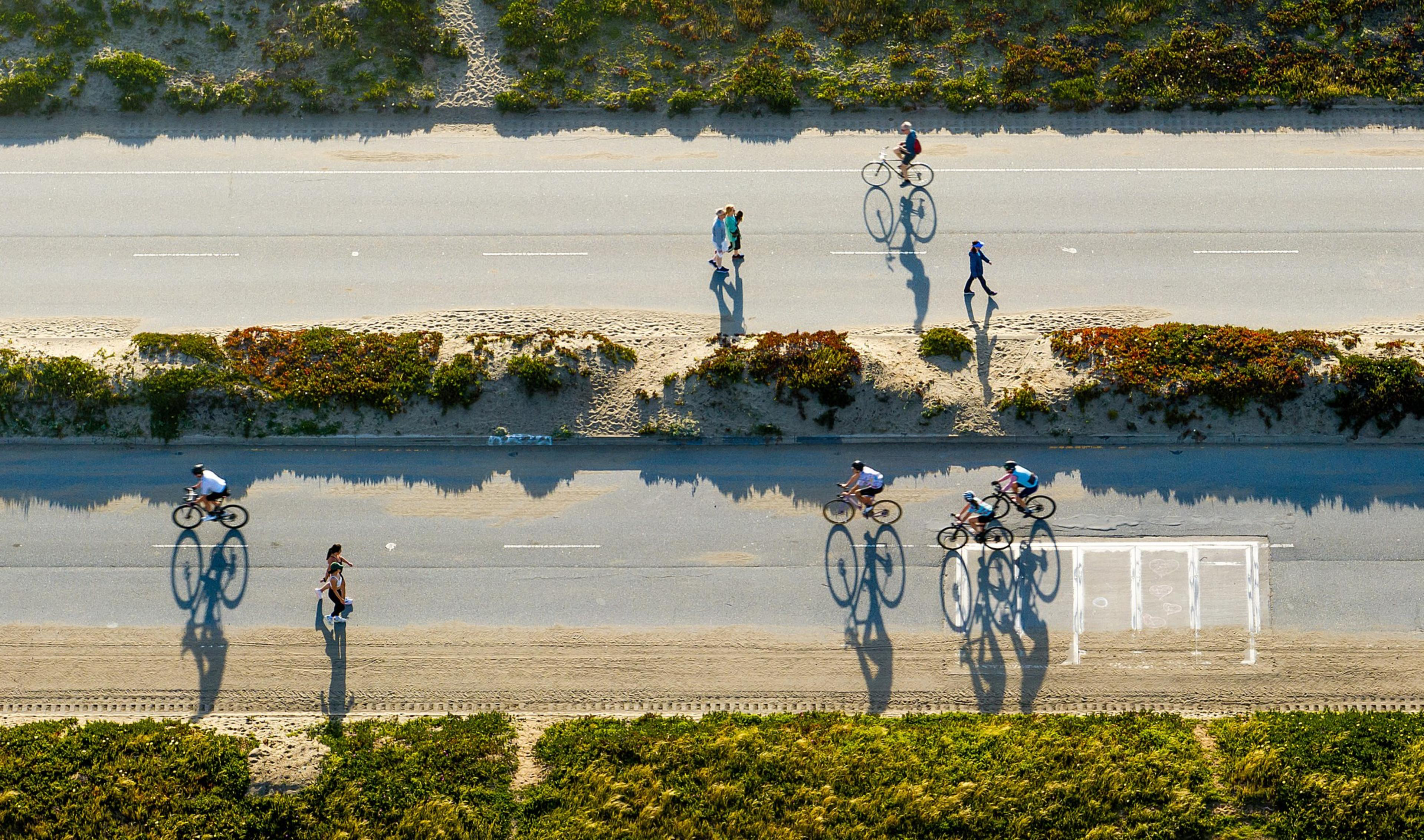
The Standard reviewed almost three hours of security-camera footage taken throughout the day March 10, before the road closed, and March 17, after the closure. Video from homes and businesses showed 74% more cars on 46th Avenue at Ulloa Street, 66% more on Lincoln Way at La Playa Street, and a 27% increase on Noriega Street and 44th Avenue.
Catie Stewart, spokesperson for Friends of Ocean Beach Park, an advocacy group supporting the road closure, disputed The Standard’s findings about traffic increases on 46th Avenue. Stewart pointed to crowdsourced data from volunteers using Telraam car-counting devices that showed that car traffic on 46th Avenue near Ulloa and Vicente streets increased by 32.4% after the road closure, less than half what The Standard found. The crowdsourced data had a larger sample, counting 6,081 cars March 10 to 14 and 8,056 cars March 17 to 21.
Zach Lipton, a volunteer data analyst for the Friends of Ocean Beach Park, said any conclusion that neighborhood traffic has increased is “premature and irresponsible,” noting that Streetlight should have analyzed data from more than one day before and after the closure. Friends of Ocean Beach Park said traffic remains below pre-pandemic levels, citing a 2021 city report.
“As commuters adjust to the new inland route, we should give the city time to monitor the adjustment patterns and adjust any challenges supported by data, not anecdotes,” Lipton said in a statement.
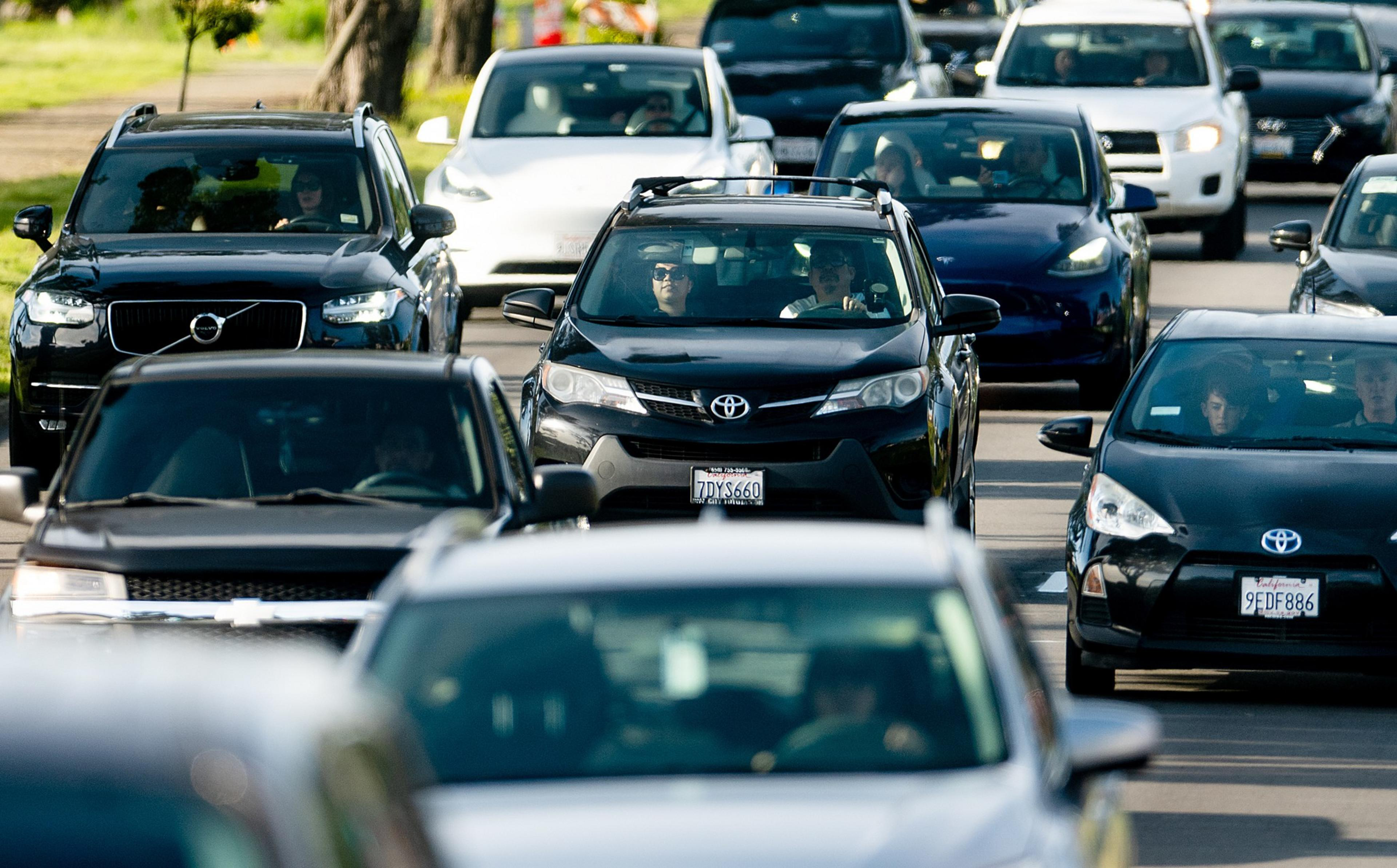
Engardio said in a statement that he has heard mixed responses from residents about traffic changes.
“Drivers are still adjusting to the change, and it’s important not to rely on anecdotes in these early days and weeks,” the supervisor said. He added that he’s working with transit officials to address any traffic or pedestrian safety issues that arise.
The SFMTA said it is collecting traffic counts and will report them publicly. Its analysis will include car counts during weeks after drivers are likely to have adjusted to the highway closure, the agency said. Transit officials have also installed traffic signals on common detour routes — including at Lincoln Way and 41st Avenue and at Skyline and Sloat boulevards — to help motorists adjust.
Meera Vinjamuri, 39, said she supports the closure and called the Engardio recall campaign “awful.” Vinjamuri, who has lived at 48th Avenue and Lawton Street for four years, said that while she hadn’t noticed a change in traffic on her street, a new park is worth slightly longer commute times.
“Even if it’s a five-minute delay, how does that impact compare to a better quality of life?” she asked.
